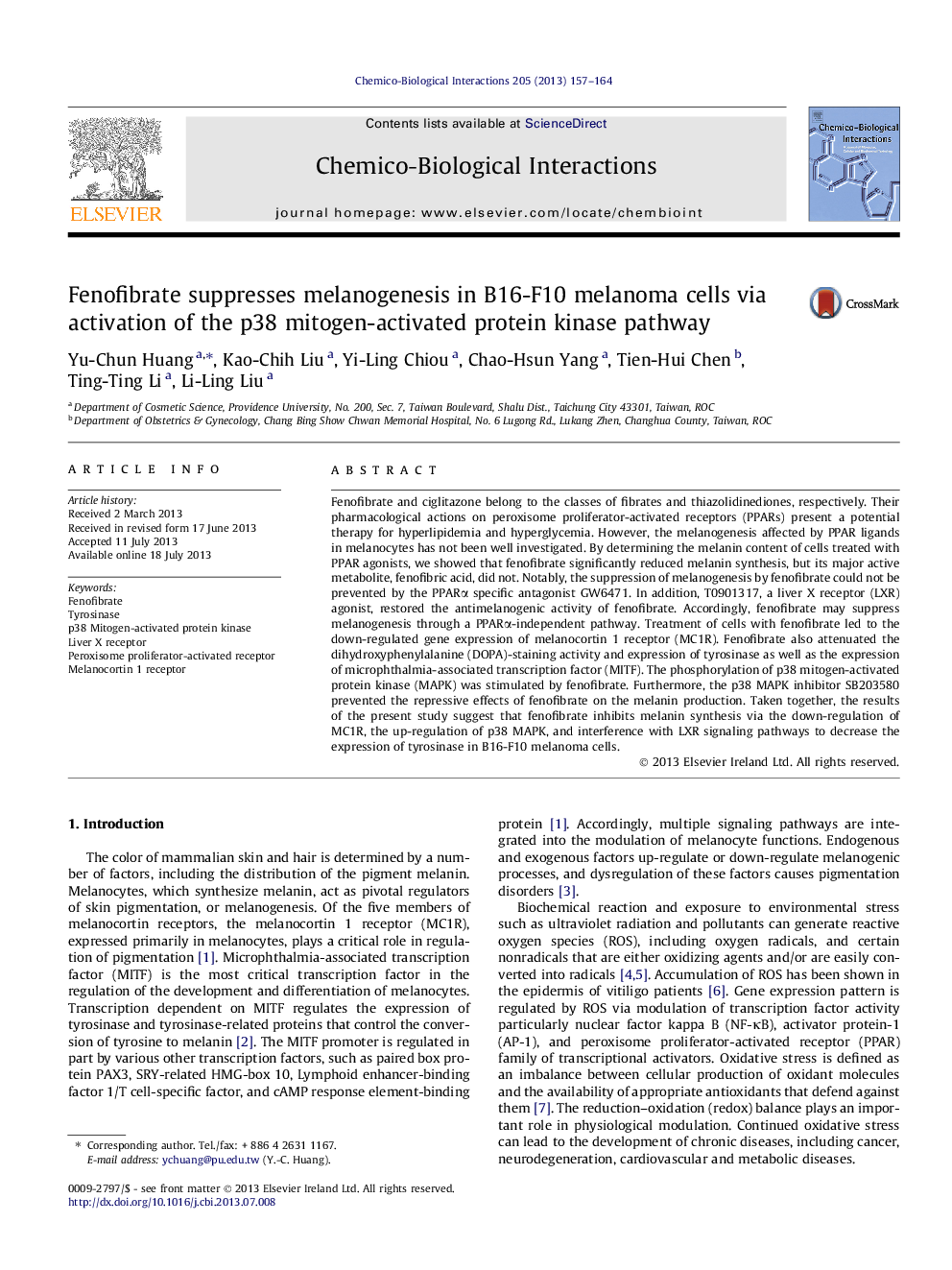| Article ID | Journal | Published Year | Pages | File Type |
|---|---|---|---|---|
| 5848081 | Chemico-Biological Interactions | 2013 | 8 Pages |
â¢Fenofibrate decreased melanin synthesis in B16-F10 melanoma cells.â¢PPARα does not mediate the effect of fenofibrate on melanogenesis.â¢Fenofibrate inhibited enzyme activity and protein level of tyrosinase.â¢Fenofibrate down-regulated MC1R and activated p38 MAPK signaling pathway.
Fenofibrate and ciglitazone belong to the classes of fibrates and thiazolidinediones, respectively. Their pharmacological actions on peroxisome proliferator-activated receptors (PPARs) present a potential therapy for hyperlipidemia and hyperglycemia. However, the melanogenesis affected by PPAR ligands in melanocytes has not been well investigated. By determining the melanin content of cells treated with PPAR agonists, we showed that fenofibrate significantly reduced melanin synthesis, but its major active metabolite, fenofibric acid, did not. Notably, the suppression of melanogenesis by fenofibrate could not be prevented by the PPARα specific antagonist GW6471. In addition, T0901317, a liver X receptor (LXR) agonist, restored the antimelanogenic activity of fenofibrate. Accordingly, fenofibrate may suppress melanogenesis through a PPARα-independent pathway. Treatment of cells with fenofibrate led to the down-regulated gene expression of melanocortin 1 receptor (MC1R). Fenofibrate also attenuated the dihydroxyphenylalanine (DOPA)-staining activity and expression of tyrosinase as well as the expression of microphthalmia-associated transcription factor (MITF). The phosphorylation of p38 mitogen-activated protein kinase (MAPK) was stimulated by fenofibrate. Furthermore, the p38 MAPK inhibitor SB203580 prevented the repressive effects of fenofibrate on the melanin production. Taken together, the results of the present study suggest that fenofibrate inhibits melanin synthesis via the down-regulation of MC1R, the up-regulation of p38 MAPK, and interference with LXR signaling pathways to decrease the expression of tyrosinase in B16-F10 melanoma cells.
